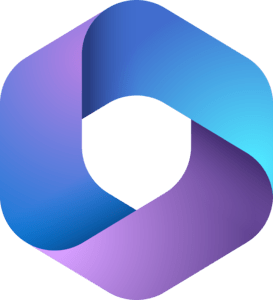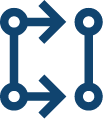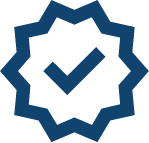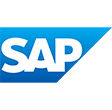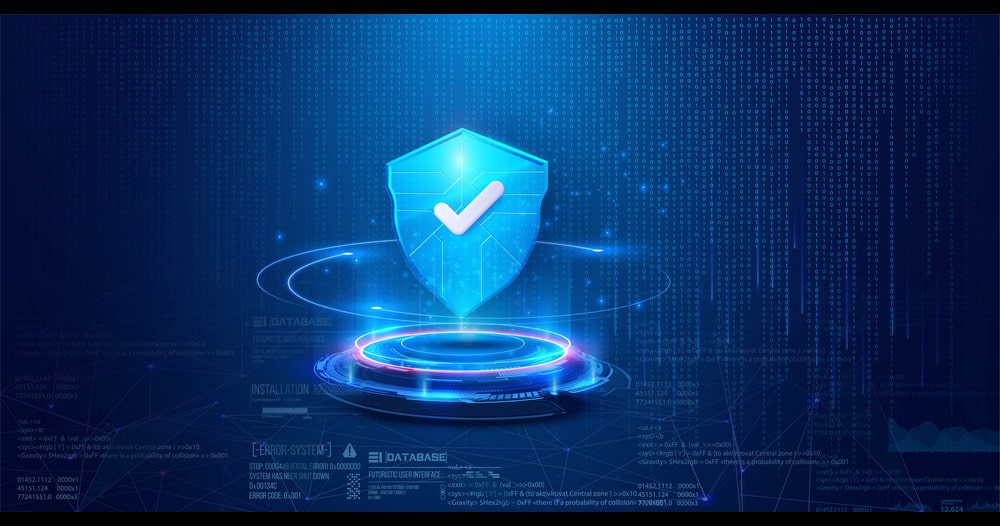In the present competitive business environment, it is crucial to have a solid software system to reduce operational difficulties, and help businesses make informed decisions. There are a variety of software in the market to simplify the processes and handle the complexities.
Tally is one of the oldest and well-known accounting programs. SAP Business One is not only an accounting software, but also an all-encompassing and comprehensive tool to manage every business obstacle in an advanced manner.
In this article, we will be drawing an examination of three of the well-known business suites and explain the reasons why you should go for SAP Business One as an alternative to Microsoft Dynamics NAV and Tally.
Which is the better choice?
The answer to that would be based on the needs of your business. Here’s a quick comparison of all the 3 tools-
| ERP SOFTWARE | SAP BUSINESS ONE | TALLY | MICROSOFT DYNAMICS |
|---|---|---|---|
| Accounting & Finance | Accounting & financials | Accounting only | Financial Accounting Software |
| Inventory & Distribution | Complete inventory & warehouse management | Inventory management only | Warehousing and Distribution |
| Purchasing & Procurement | Built-in purchasing & inventory forecasting | Flexible Purchase and Sales Management | Procurement & Sourcing |
| Sales & CRM | Sales, customer & vendor management | Not available | Available |
| Production & MRP | Serial numbers, BOMs, MRP & more | set-up the cost units, availability of reports | Set up a batch attribute-based pricing formula |
| Job Costing | Job costing & service management. | Cost Centre and Profit Centre Management | Monitoring of cost available |
| Project Management | Full project management & capacity planning | Not Available | Not Available |
| Reporting & Analytics | Standard & custom reports, KPI dashboards | Accounting, Financial, Inventory, Management Control Reports | Not Available |
| Max Users | Unlimited | Not Available | Not Available |
| Role-based Users | Enable access based on user needs | Available | Available |
| Configure to Your Needs | Highly configurable to meet business needs | Not Customizable | Not Customizable |
| Customized Workflows | Customizable process workflows | Available | Available |
| Account Segmentation | Up to 10 segments for reporting & organization | Available | Create segment to target markets |
| Industry Add-ons & Integrations | Nearly 600 integrated industry solutions | Basic Integrates Features | Industry Specific Modules Available |
| Scalable System Performance | Robust performance with large amounts of data | Not Available | Not Available |
| Compliance | Domestic and International Compliance | Not Available | Compliance with business laws and regulations |
Let’s discuss these differences in detail here-
1. Usability
SAP Business One is very flexible and durable, which makes it ideal for nearly all industrial needs such as manufacturing distribution, wholesale chemicals, pharmaceuticals trade, aerospace, retail, etc. It’s more vertically oriented in comparison to Microsoft Dynamics NAV.
Additionally, SAP is running across 180 countries, which provides more security regarding maintenance and resolution of queries.
Microsoft Dynamics NAV, while being more flexible, is suitable for more complicated business settings like food and beverage, as well as computer-related businesses.
Tally ERP software is an improved and enhanced version of the original Tally accounting software that is focused on GST management of inventory, accounting, and other essential back-office functions. Tally is also integrated with various other areas, such as accounting, finance, inventory sales, etc.
On the other hand, SAP Business One is extensively tested and widely acknowledged as a Software for ERP which helps to streamline each business process. For example, managing your finances or managing customer relations, managing materials as well as managing the lifecycle of your product production planning sales and distribution, business intelligence, to mention just a few.
2. Database on the back
SAP B1 makes use of an SQL server, and is based on the HANA (High-Performance Analytic Appliance) database. HANA is their own relational database management system that can perform advanced analytics in a very short time. It allows you to remove, transform and load features quickly, as needed.
Whereas the Microsoft Dynamics NAV uses Native Database and SQL servers as a relational management database system. Although it’s good, it’s slower when compared with SAP HANA.
Tally ERP Software uses an inbuilt SQL processor that processes SQL select statements used to fetch and store data in Tally. The collections which are exposed to ODBC are available as external applications. Backup in Tally is stored in Backup companies on disk under server Data Loc.
3. Multi-dimensional data queries
SAP HANA is the best platform when it comes to performing predictive analytics including graph data processing as well as text analysis spatial data processing, etc. Whatever your company’s requirements, SAP Business One offers the most native multidimensional data queries tool.
It is also possible to perform a thorough analysis of data and report on factors such as customer behaviour, patterns of purchase and purchase patterns, etc. with MS Dynamics NAV but it isn’t as effective as B1.
4. Reporting
SAP B1 runs on its HANA Database Management System, which has an in-memory version. Why should you care about this? Consider this tool as running from its own internal storage, instead of making use of the disk space. It is therefore faster as well as optimized. It can also make accurate predictions in less time.
If you are using Dynamics NAV, you will have the option of SQL Server Reporting Services, which are installed on the computer’s disk. Are you able to use it? No. It will however be slow compared to the SAP HANA and will make reports a bit difficult for users.
Tally ERP Software has an inbuilt SQL processor that processes SQL Queries as mentioned earlier.
5. Security
Affirmed by more than 60,000 customers from all over the world, there is an argument as to the reason SAP Business One is the most effective ERP. With high-security protocols as well as the standard encryption method, SAP Business One complies perfectly with global rules and regulations. The software is secured against any cybersecurity threats and breaches. SAP Business One is the highly secure and necessary solution for mid-sized and small companies.
In the same way, Tally security protocols in the software ensure that no one has access to the information. However, in the case of the user level control, administrator’s intervention is frequently required due to the tolerance limits for users set in Tally software.
Data Security is one aspect of Dynamics NAV taken seriously. The security system of Dynamics NAV allows you to control objects or tables a user can access within each database. In addition, personalized and restricted access can also be specified to available objects and tables, depending upon its modification, reading or ability to enter data.
6. Data Validations and Substitution
SAP Business One facilitates the verification of values entered in a way that is based on the various combinations that were previously set up. This is a crucial feature since it reduces the possibility of mistakes. There isn’t any such check and intelligent feature for substitutions of data in Tally software.
Data Validation and controls can be achieved in the Tally ERP Software at two levels, namely, Platform level and the TDL Level. Interestingly, TDL programmers do not have control over any of the platform level validations. These TDL programmers are only allowed to make changes to the validations and controls at the TDL level.
Being the user of Dynamics NAV, you can manage all the validation rules and regulations of appropriate objects and tables. What’s interesting about data validation in NAV is its Custom Function method. By registering custom function method in the SC – Validation code Microsoft Dynamics NAV developers can create much complex data validation rules as required by their system.
Data Handling Capacity
There are no hurdles or limitations in managing a massive database. You can handle millions of files and sort the data with SAP Business One software. However, using Tally software, it’s difficult to manage massive amounts of data. It also ceases to respond when it comes to processing large databases.
When it comes to the handling capacity, Tally ERP Software falls short by a considerable margin when compared to SAP B1; However, The capacity is manageable, and based upon the requirements of the enterprises, modifications can be made to serve the purposes of the software.
As we have already discussed, Dynamics NAV is built for small and medium enterprises; unsurprisingly, the data handling capacity of the software is limited and the business requirements of enterprises must be assessed before choosing their ERP software.
7. Suitability Standpoint
SAP Business One (SAP B1) as we’ve previously mentioned is a tried and tested software widely used for managing various business processes. It’s a great software that’s suitable for medium and small-sized businesses and large-scale companies with multiple locations and multinational operations. However, Tally software is good and recommended only for SMEs with a smaller data volume and the companies that aren’t multinational or globally.
Dynamics NAV is boasted to be an adaptable Enterprise Resource Planning software, which is built for small or medium sized businesses. Its main aim is to automate, perform purchasing operations, accounting, stock management among other tasks.
Since Tally is much simpler, basic, and performs all the basic functions of accounting including business accounting and inventory management. It is primarily suited for Govt. and small businesses as it provides, Govt. supported formats, multilingual functionality, etc.
8. Multi-level system for document approbation
SAP Business One software facilitates users to go through the documents at several levels before it is published. In the case of Tally, it has a restriction of passing documents through two levels before they are posted.
Multiple level system for document approbation can be achieved using the containerisation feature in Microsoft Dynamics. You can also create a multiple-level container structure which is referred to as nested containers.
With the help of Tally Gold, one can achieve multiple level systems in Tally ERP, but even after that the systems are not as efficient, effective, or impactful as SAP B1.
10. Cost of Ownership, Implementation, and Maintenance
Cost of owning, the implementation maintenance and installation are usually higher in SAP B1 compared to Tally software. However, the advantages of having a comprehensive and ready-for-business software after implementation surpass cost. SAP Business One cost in very little time.
Dynamics NAV offers four types of licensing, depending upon the requirement of businesses. In addition, Since failed attempts at software implementation on-premises or cloud cloud-based can be really tricky, and massively expensive, which requires an expert to be called in, increasing the cost of the project.
11. Parallel Accounting
It is, perhaps, one of the in-demand features available in SAP Business One software when compared with other programs on the market. It’s a fully supported ERP with a parallel accounting feature. However, it is a bit obscure in Tally; it’s not as popular. There’s only a temporary solution to it.
Tally ERP software allows its users to create groups. A group is a collection of leaders of similar nature. To enable smooth functioning, Tally ERP software by default creates 28 groups used in the account chart. However, Tally follows a single leader form of accounting. This when studied shows direct contrast with another form of accounting, subsidiary leader accounting, which is much more decentralized.
Dynamics on the other hand, does support Parallel Accounting enabling valuation, and closing transactions for a company code based on group accounting principles. With the help of Microsoft Dynamics NAV, you can create financial statements in situations where mostly fixed asset postings are constituted on several levels to bring together different GAAPs, such as IFRS, local GAAP, and tax GAAP, among others.
Conclusion
Tally and Microsoft Dynamics Nav are better suited for small and start-up companies that do not require a huge capacity for data handling and are content with accounting basics and other functions. Whereas, SAP Business One, the innovative ERP is suited for medium and small-sized businesses, but also large corporations that are globally based and require software that will streamline their business processes and relieve stress by coordinating everything in a seamless manner.
More than 1 million end users from more than 60,000 SMBs and SMEs all over the world use SAP Business One to transform the way they work which now starts at ₹27,000/Month. See it to believe it, register for a demo!
ShapeThe partnership that goes the extra mile to enable business transformation for small and medium-sized enterprises (SMEs)
As one of the major SAP partners in the country with more than 13+ years of SAP B1 implementation experience, Embee is strategically positioned to offer the very best of process integration and automation solutions, based on SAP Business One, to growing businesses. While SAP Business One is known for its unparalleled functionality and scalability to drive growth for SMEs, Embee’s domain expertise, thorough approach and world-class support have made us one of most preferred implementation partners of ERP solution.
Embee provides end-to-end services that guarantee optimum functionality at each step such as License Procurement, SAP Infrastructure, customization with Embee’s SAP-approved add-ons, comprehensive consultation, and implementation services.
- Consultation services– Solution consultation and project planning
- License procurement– SAP license procurement and deployment services
- Customization with Add-ons– Customization of solution with SAP-approved addons
- SAP Business One Implementation– Full production implementation of SAP B1 software
- Post Implementation Training & Support– Review, training, and support for further optimization.
















